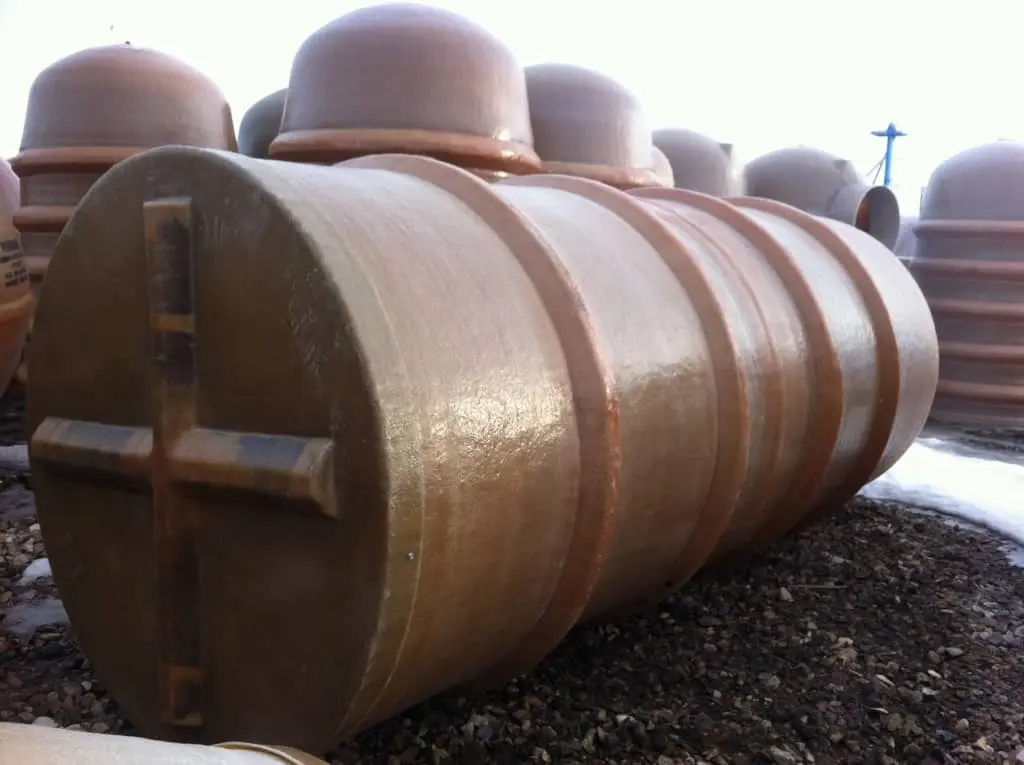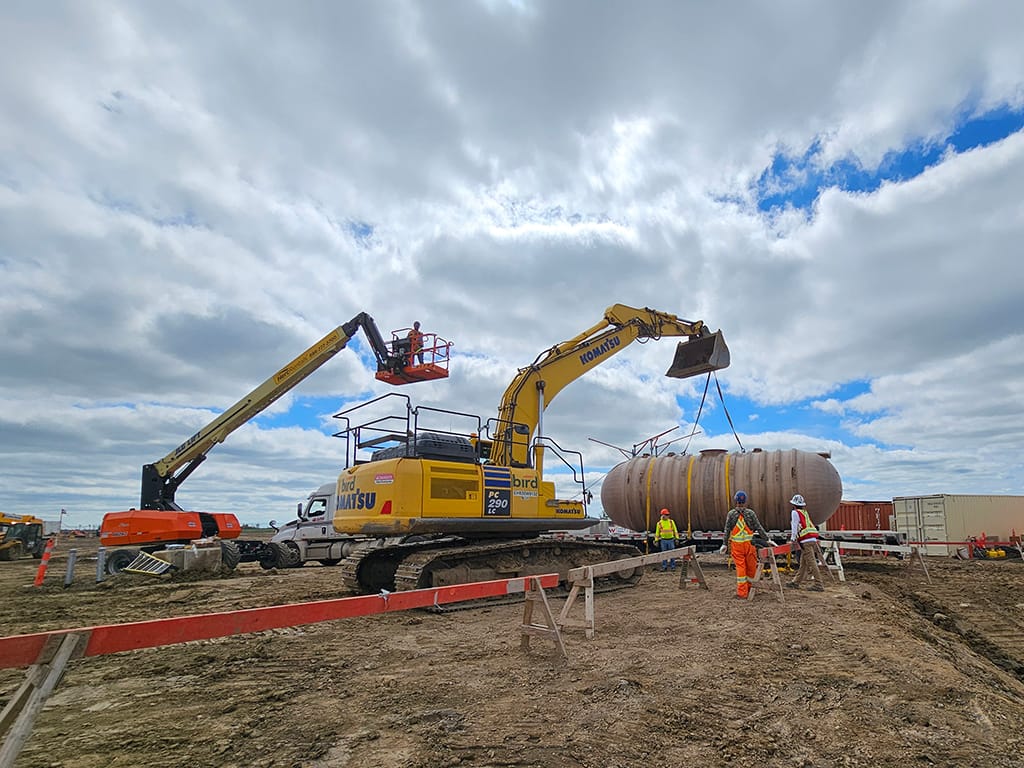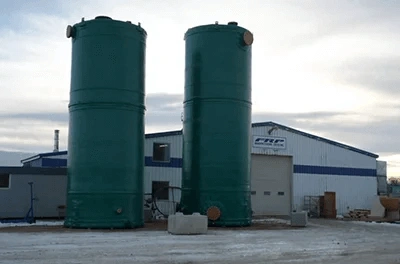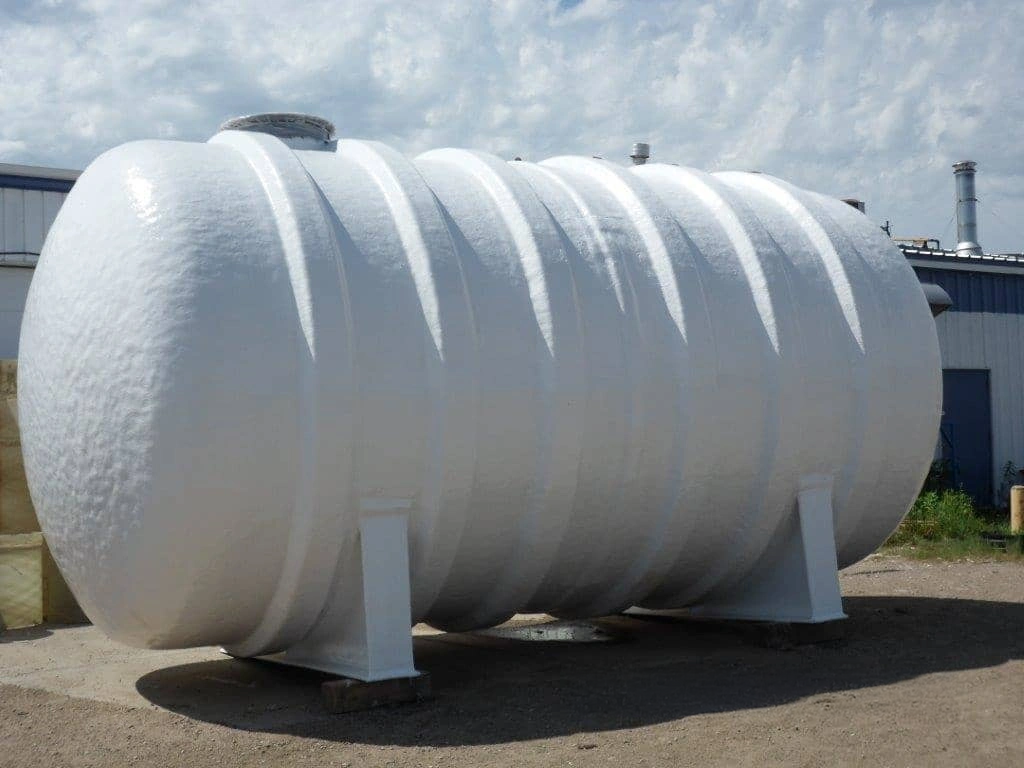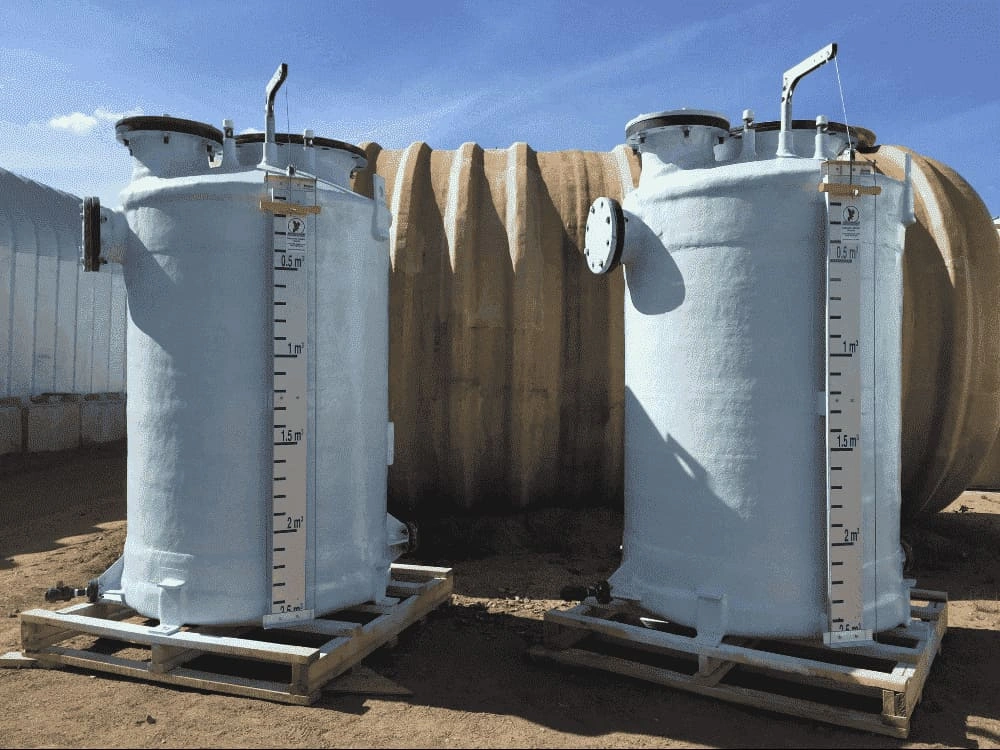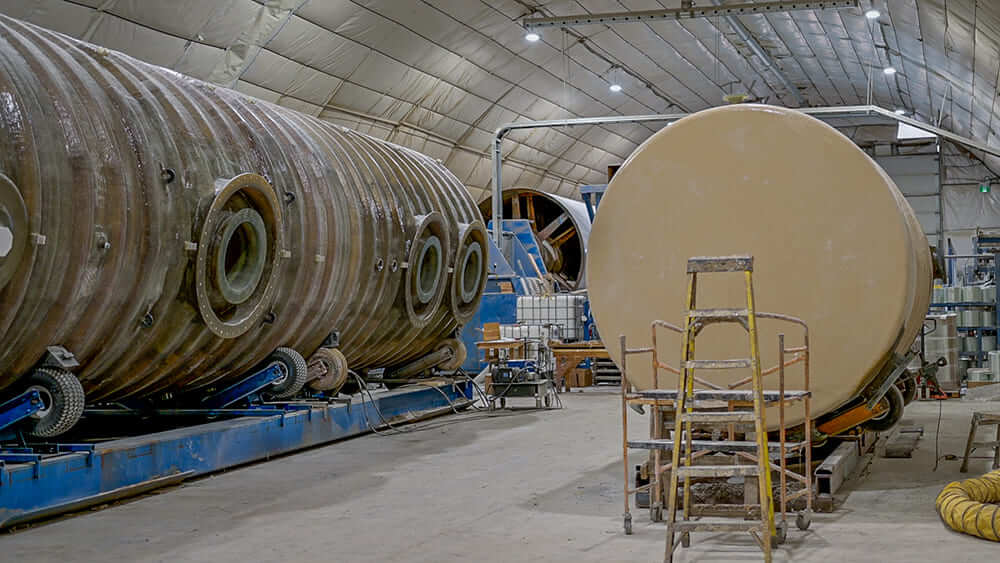It’s been proven time and again that fiberglass reinforced plastic tanks are a superior storage option for caustic or corrosive substances, wastewater and potable water, but what makes them such a good investment? The durability and lightweight design are big selling points, but the customization and thermal stability of these tanks are what make them such a reliable product for job sites that require tanks to withstand extreme temperatures. Here’s what you need to know about an FRP tank’s thermal stability and how it can work for you and your current project!
Thermal Stability – What Is It?
Simply put, thermal stability is a polymer’s capacity to resist exposure to intense heat and still preserve its toughness and flexibility. This is tested by thermogravimetric analysis, or TGA, and the test focuses on weight or volume depletion due to heat and certain temperatures that are key to determining the profile of the polymer. The thermal stability of a polymer is defined heavily by the chemical formula used in the development, the molecular weight and its crystallinity. If you think about it in terms of thermal expansion, the process of matter changing density, shape or volume as a reaction to thermal fluctuation, an FRP tank can stand up to high heat without sprouting a leak and is more reliable in hot situations in comparison to PVC, polyethylene and other materials used in competing tanks. This means less money out of your pocket for repairs and replacements in extreme environments.
Thermal Stability – Why You Need It
FRP performs very well under the pressure of heat and has a lower thermal conductivity than rivalling materials, meaning it’s a good heat insulator. FRP is fully non-conductive when it comes to electrical reactions too! These kinds of attributes are essential in situations where the tanks are being employed in dangerous environments. Tanks constructed from fiberglass reinforced plastics are much more resistant to weathering and fading and they won’t break down in the face of abrasive substances. You can trust that what you store with an FRP tank will stay put.
Thermal stability is only one reason to invest in an FRP tank. Fiberglass reinforced plastic tanks have become standard for many businesses and operations because of their reliability and lower maintenance and repair costs. They outlast many competing materials, like steel or aluminum or concrete, and are exceptionally customizable, meaning they can fit nearly any job you throw at them. If you’ve been considering upgrading your FRP storage units, get in touch with us today and we’d be happy to bring your next project to life!

